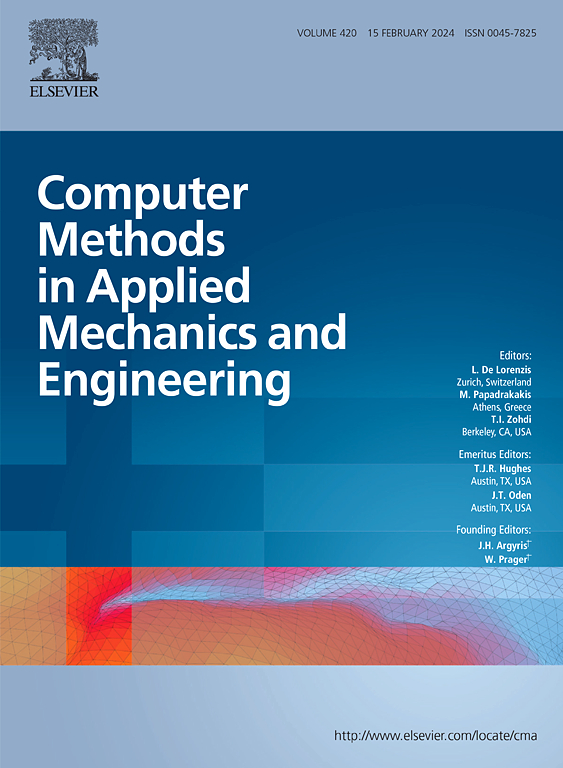A coupled FEM-VEM approach for crack tracking in quasi-brittle materials
IF 6.9
1区 工程技术
Q1 ENGINEERING, MULTIDISCIPLINARY
Computer Methods in Applied Mechanics and Engineering
Pub Date : 2025-01-30
DOI:10.1016/j.cma.2025.117756
引用次数: 0
Abstract
The numerical simulation of crack propagation in quasi-brittle materials has historically been mainly faced by means of consolidated approaches in the framework of the finite element method (FEM). However, the very recently developed virtual element method (VEM) is a new promising technique whose strong point is the possibility to model polygonal meshes, characterized by any number of edges. This paper proposes a new approach, coupling FEM and VEM for crack tracking in quasi-brittle materials. In these materials, diffuse degradation is followed by high deformation bands localizing in certain regions of the structure. To best exploit the potentialities of FEM and VEM, in this work the structure is initially entirely modeled through a FEM mesh. Then, when a diffuse damage meets the requirements for a localized band formation, the involved finite elements are converted into virtual sub-elements among which a thin layer is introduced. The thin layer is modeled through interphase (IPH) elements, which are advanced mechanical devices with respect to the common interface elements since internal strains and stresses are added to the contact ones. The portion of the structure modeled using VEs and IPHs is called substructure. Structure and substructure are solved through two nested iterative procedures.
The proposed numerical and crack tracking strategy are illustrated in detail and the results on three benchmark examples show its applicability as an alternative strategy to the full FEM approach.
求助全文
约1分钟内获得全文
求助全文
来源期刊
CiteScore
12.70
自引率
15.30%
发文量
719
审稿时长
44 days
期刊介绍:
Computer Methods in Applied Mechanics and Engineering stands as a cornerstone in the realm of computational science and engineering. With a history spanning over five decades, the journal has been a key platform for disseminating papers on advanced mathematical modeling and numerical solutions. Interdisciplinary in nature, these contributions encompass mechanics, mathematics, computer science, and various scientific disciplines. The journal welcomes a broad range of computational methods addressing the simulation, analysis, and design of complex physical problems, making it a vital resource for researchers in the field.

 求助内容:
求助内容: 应助结果提醒方式:
应助结果提醒方式:


